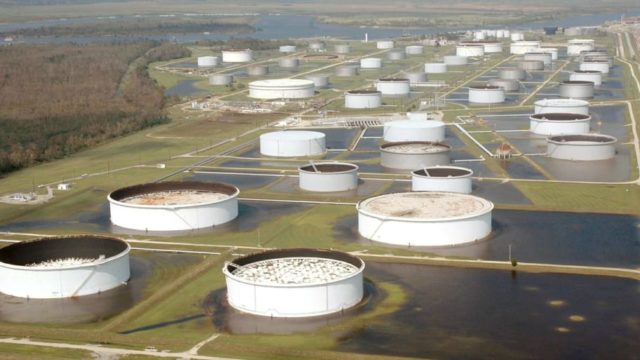Americans have had fairly stable energy prices for the past few years, and fairly low ones, in part due to the tremendous increase in energy production in the United States – both natural gas and oil. In 2018, the U.S. produced 95% of its domestic energy requirements, the largest share since 1967. Stability is also owed to a mainly-steady oil supply emanating from OPEC countries and Russia, making up for decreased supplies from Iran and Venezuela. Gas prices, the marker Americans watch almost to the exclusion of everything else, averaged $2.60/gal in 2019 , 4% lower than in 2018.
But while much of American energy is domestic, oil is a commodity with a single world-wide market. The choices other countries make ultimately affect our industry. In December 2016, Russia concluded an agreement with OPEC to balance output and stabilize price at an agreed-upon level – then at about $60/bbl. As expected, everybody cheated a little bit, but by the end of 2017, stability emerged. Saudi King Salmon paid his first ever state visit to Russia, where Russian President Vladimir Putin talked about major investments in the kingdom. In June of last year, the deal was extended for six to nine months. “Demand is softening a little bit, but I think it’s still healthy,” said Saudi energy minister, Khalid al-Falih.
But then came coronavirus.
Saudi Arabia called an emergency meeting of OPEC and Russia, planning to cut production to keep the price stable as world economies faltered. But Russia, having a very large budgetary reserve, decided to keep pumping and let prices fall. For Americans, conditioned by the Arab oil embargo of 1973-74 and the 1980 Iranian Revolution embargo to think lower prices are good, the outcome of the meeting was something of a shock as we find ourselves in the middle of a Saudi-Russian energy war.
The Russians weren’t trying to help us with gasoline prices. Furious over American opposition to the Nord Stream II pipeline connecting Russian natural gas to European markets, Putin’s hope is to bankrupt the relatively new American oil industry and drive the U.S. from the market. Oh, and by the way, end up with more market share later. Putin is prepared to spend his reserve rubles propping up the Russian economy in the meantime.
Saudi Arabia’s fight is not with the United States, so the kingdom’s objective was not American industry. But the Sunni Saudis and the Iranian-supporting Russians are adversaries – over energy and more – so the Saudi government changed its mind and INCREASED production to FURTHER sink prices, hoping to damage the Russian economy more than Putting was prepared to tolerate.
And, indeed, there was a massive price decline last week – 30% in less than a week and 50% since January. It was, according to some experts, the worst week for the oil industry since 2008. Other analysts estimated that annual oil demand could decline by more than the 2.65 million barrels per day recorded in 1980 after the Iranian revolution.
For the United States, the oil and natural gas industries are on the block. Not state-owned like those of Russia and Saudi Arabia, American energy producers are supposed to make their money on the market. But when the market rises or falls by collusion, where do they turn? CEO of Continental Resources, Harold Hamm, called the Saudi-Russian moves illegal. But it isn’t clear that there is a legal remedy.
So, President Donald Trump announced the government would purchase enough crude oil to fill the U.S. Strategic Petroleum Reserve “right up to the top.” The tab would be about $2.6 billion at last Friday’s prices for 77 million barrels of crude.
We still have a Strategic Petroleum Reserve?
Although there were discussions about dismantling it a few years ago, the Reserve remains the largest emergency oil supply in the world. Designed to prevent the disruptions seen in the aftermath of the 1973-74 embargo, it has a capacity of 727 million barrels and presently holds about 635 million. It can be opened by the government to prevent economic dislocation in the face of overseas contingencies.
Within about two weeks, the President’s purchases may start showing up at the Reserve.
It may not work. Prices may rise and then fall again under longer-term economic pressures engendered by COVID-19. And there is still the question of paying for it – as Congress would have to appropriate the funds. “We continue to see political headwinds,” analysts with ClearView Energy Partners said Saturday, calling it “problematic” for the Democratic-led House to approve a plan the President has said will “save” an industry.
The President has other options for funding, but it would be a sorry day if the House of Representatives abetted Russia and Saudi Arabia in price fixing to cause long-term damage to the American oil industry.






